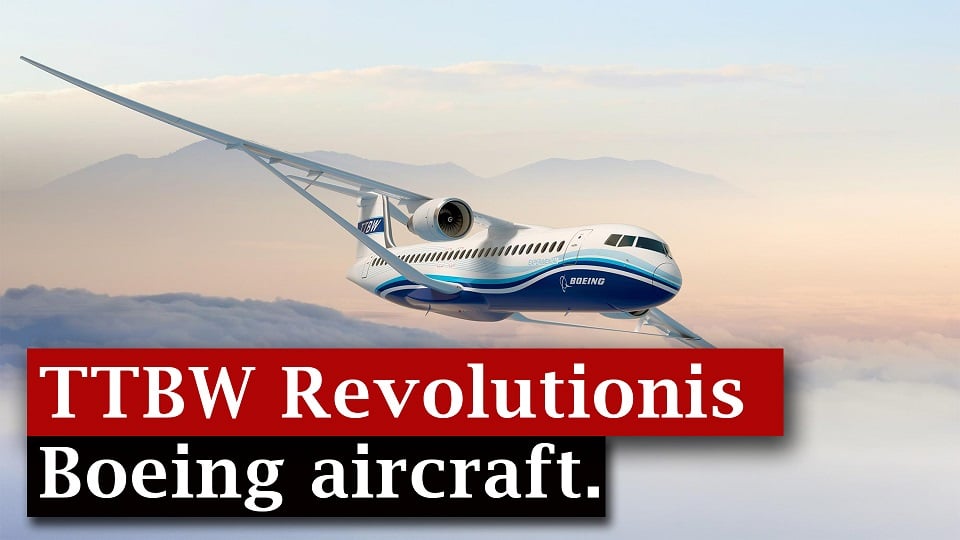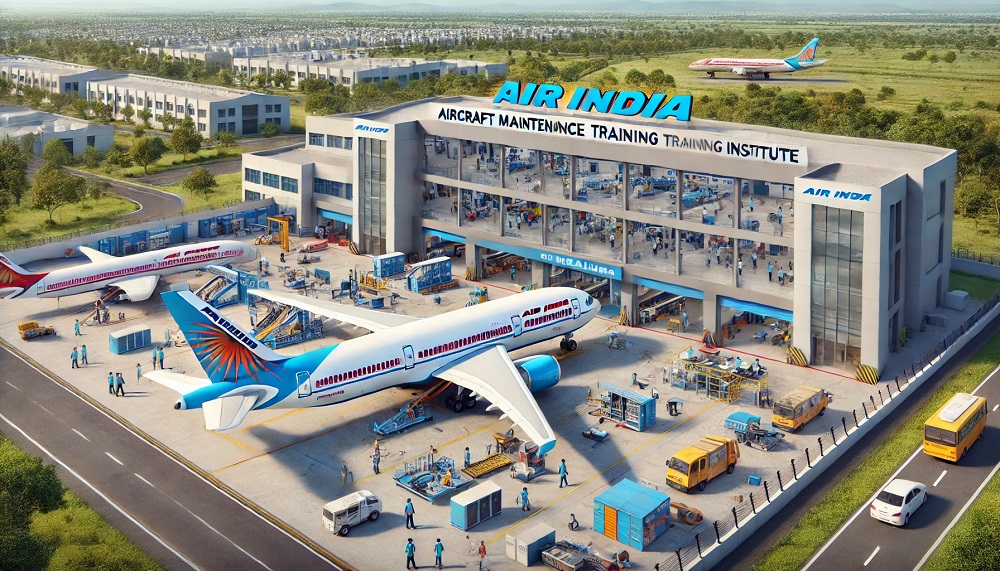Airlines
Will Boeing use NASA’s TTBW prototype to begin building short haul aircraft?

The full-scale Transonic Truss-Braced Wing, which is expected to fly by 2028, is being developed jointly by Boeing and NASA. This aircraft might set the pace for future advancements in the aviation industry. As with other commercial aircraft, the classic wing structure consists of a single, fixed frame. The new design will replace the existing method of attaching two frame structures to the fuselage, extending the length of the wing, adding additional strength, and improving stability and effectiveness.
The new design’s development is crucial for Boeing since it will maintain the footprints on small-segment aircraft while also achieving the most efficient aircraft that might result in a higher market share.
-
Increase fuel economy by 30%
The scale Transonic Truss-Braced Wing (TTBW) demonstrator aircraft has already been subjected to wind tunnel testing and other structural enhancements for the aircraft body parameters. Future designs will be influenced by the technology shown off and put to the test as part of the Sustainable Flight Demonstrator (SFD) initiative, which may result in ground-breaking aerodynamic and fuel efficiency improvements.
Depending on the mission, a single-aisle airplane with a TTBW layout could, when coupled with anticipated improvements in propulsion systems, materials, and systems architecture, cut fuel consumption and emissions by up to 30%.
This aircraft will serve approximately 50% of the commercial market which is short to medium whole single aircraft but we’re going to reduce as much is 30% the fuel consumption with better engines and look at this way longer and thinner and it’s so long and thin it Hass to have a breeze but you can actually get list on this brace as well as the way the old concept of the old biplane Stabilized by the braces that will make commercial airliners much more fuel efficient by creating less drag and in addition to the design the sustainable flight demonstrator will integrate multiple other related green technologies this configuration will save fuel.
-
Aircraft may have up to 130 seat capacity.
This aircraft will be classified as a small to medium-haul aircraft and can accommodate up to 100 to 130 seats, which is comparable to the E195-E2 seating capacity. Initial designs for aircraft will be tested in smaller sizes before gradually growing to larger ones. According to a NASA detail, an aircraft may receive a lift from both the upper and lower wing flaps.
Advanced propulsion systems, which are now constrained by a lack of underwing space in today’s low-wing airplane layouts, could potentially be accommodated by ultrathin wings braced by struts with bigger spans and higher aspect ratios. Boeing will combine brand-new components with existing car parts to create the prototype vehicle.
-
Funding for TTBW
The program jointly funded NASA’s funding through the SFD Space Act Agreement totaled $425 million. The SFD program will also leverage up to $725 million in funding from Boeing and its industry partners to shape the demonstrator program and meet the resource needs required. Separately, Boeing’s previous internal investments for recent phases of sustainable aviation research total $110 million.
The TTBW airframe concept is the result of more than a decade of development supported by NASA, Boeing, and industry investments. Under previous NASA programs including the agency’s Subsonic Ultra Green Aircraft Research program, Boeing conducted extensive wind tunnel testing and digital modeling to advance the design of the TTBW. Early conceptual studies started under NASA’s Environmentally Responsible Aviation program
Here are more details of the technology with explained by the NASA bill Nelson.
” We are constantly attempting to figure out how to lessen our carbon footprint here as terrestrial beings on the surface of planet earth, we have out there in space that is measuring what is happening with our planet and will increasingly do so. Today is an announcement about aviation, climate, and technology, and Pam has introduced that when you fly in any kind of aircraft, you are surrounded by NASA technology.
we have made aviation more sustainable independence it’s in our DNA now during the 70s and the 80s NASA research resulted in a new type of winning A few and today were improving takeoff and landing taxi technology to see if you’ll cut the leaves and get you to your destinations sooner and cheaper and we did a multi-year project at the Charlotte airport it’s now in 20 airports around the country so that when you pull back from the gate continuously without that stop-start the burn so much fuel and by the way burns you up in impatience to finally get on your flight and so smoothly down to the end of the tax with an on and take off. ”
” We’re working to develop new next-generation aircraft and engines that would make commercial airliners as much as Year and if we can accomplish that people across the world we’re gonna be able to fly over populated areas supersonic to get to their destinations faster and we’re leaving the development of electric propulsion powered aircraft we’re gonna fly the X 57 this year quieter more efficient and environmentally friendly than today’s commuter planes and so NASA is at the cutting edge of technology when it comes to fly that’s a portable charger that leads us now why we are gathered here today to announce the next big development in NASA aeronautics in the commercial aviation industry national has selected Boeing as our partner in designing building and fly Single aisle aircraft which is scheduled to fly in 2028.”
As we know saving fuel is not only good for the planet it means less expensive tickets for passengers flying in the US you’re likely to board a single all aircraft like the size think of a 737 they are the workhorses of most of the fleets they remain the most in-demand design and are critical to retaining American competitiveness in manufacturing and Boeing estimates that Five in 2015 and despite an advancement the single all aircraft are also responsible for about half of the admissions today in the commercial aviation sector and that’s exactly why NASA chose Boeing for this project Boeings proposed design could make a significant contribution toward our goal of improving fuel efficiency as I said bye as much is 30% and we and they have a plan to make that a reality in just a few years this project aims to revolutionize the kind of aircraft in the public uses most frequently when they take to the skies and it’s going to be able to help meet President Biden’s goal to achievement zero aviation

Airlines
Air India to Launch aircraft maintenance training institute in Bengaluru

Air India, one of India’s leading global airlines, is set to establish a Basic Maintenance Training Organization (BMTO) in Bengaluru.
This institute will offer a comprehensive Aircraft Maintenance Engineering (AME) program certified by the Directorate General of Civil Aviation (DGCA). The program will follow an integrated 2+2 year structure, combining classroom learning with practical, hands-on training.
This initiative is part of Air India’s broader goal of creating a robust aviation ecosystem in India. With plans to expand its fleet and strengthen its operations, the airline aims to build a skilled workforce of maintenance engineers, making the organization self-reliant while supporting its ambitious transformation journey.
This country tops visa rejections in the popular Schengen countries
To bring this vision to life, air india has partnered with Bengaluru Airport City Limited (BACL), a subsidiary of Bangalore International Airport Limited (BIAL). Together, they will develop a state-of-the-art facility spanning 86,000 square feet at Bengaluru Airport City.
This purpose-built campus will feature modern classrooms, well-equipped laboratories, and qualified trainers to deliver world-class education and training. The institute is expected to become operational by mid-2026.
The BMTO will be located close to Air India’s new 12-bay Maintenance, Repair, and Overhaul (MRO) facility, also set to open in Bengaluru by early 2026. The AME program will begin with two years of academic coursework, followed by two years of practical training at the MRO, ensuring students receive hands-on experience adhering to industry standards.
Sanctions & Engine Issues Ground Half of Russia’s A320neo fleet
In the meantime, Air India has introduced a Cadet AME program in collaboration with reputable institutions in Bengaluru and Hyderabad.
This ensures continuity in its commitment to developing skilled aircraft maintenance engineers while the BMTO facility is under construction. The program also allows students to pursue a bachelor’s degree through university partnerships, enhancing their career and academic opportunities.
With this initiative, air india plane aims to address the growing demand for skilled professionals in aircraft maintenance and engineering, air india new planes contributing to the development of India’s aviation sector and creating specialized career paths for aspiring engineers.
-

 Aviation2 months ago
Aviation2 months agoMicrosoft Flight Simulator Raises $3 Million to Bring Back the An-225 Mriya
-

 Airlines2 months ago
Airlines2 months agoQatar Citizens Can Travel to the United States Without a Visa
-

 Aviation2 months ago
Aviation2 months agoQatar Airways bans these new Electronic Devices on plane
-

 Airlines2 months ago
Airlines2 months agoJapan Airlines Rolls Out Free Domestic Flights to International Passengers
-

 Defence2 months ago
Defence2 months agoWhich Country Has the Largest Fleet of Fighter Aircraft?
-

 Travel2 months ago
Travel2 months agoQatar Airways Launches Four Additional Flights from Amsterdam
-

 Airport2 months ago
Airport2 months agoWestern Sydney Airport Welcomes Its First Plane After 6 Years of construction
-

 Airlines4 days ago
Airlines4 days agoDAMAC Air: Dubai’s New Luxury Airline Offers Free Flights for Registration








